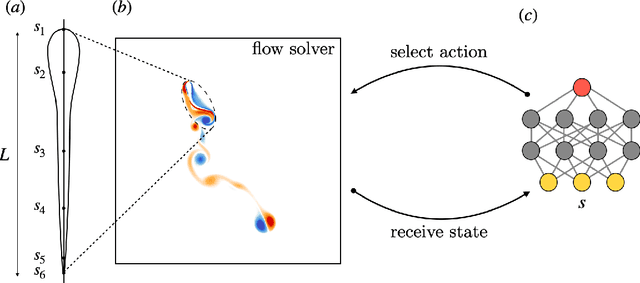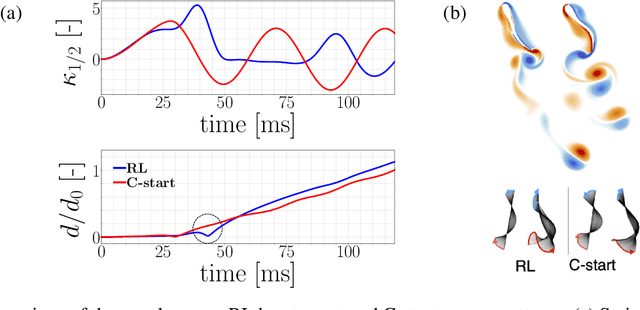Learning swimming escape patterns under energy constraints
Paper and Code
May 03, 2021



Swimming organisms can escape their predators by creating and harnessing unsteady flow fields through their body motions. Stochastic optimization and flow simulations have identified escape patterns that are consistent with those observed in natural larval swimmers. However, these patterns have been limited by the specification of a particular cost function and depend on a prescribed functional form of the body motion. Here, we deploy reinforcement learning to discover swimmer escape patterns under energy constraints. The identified patterns include the C-start mechanism, in addition to more energetically efficient escapes. We find that maximizing distance with limited energy requires swimming via short bursts of accelerating motion interlinked with phases of gliding. The present, data efficient, reinforcement learning algorithm results in an array of patterns that reveal practical flow optimization principles for efficient swimming and the methodology can be transferred to the control of aquatic robotic devices operating under energy constraints.
 Add to Chrome
Add to Chrome Add to Firefox
Add to Firefox Add to Edge
Add to Edge